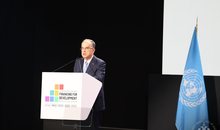
 Flash News
Flash News
Accident at "Shkalla e Tujanit", truck overturns in the middle of the road, driver injured
Vlora by-pass, work delays and cost increases
Milan are expected to give up on the transfer of Granit Xhaka
Inceneratori jashtë funksionit, përfshihet nga flakët fusha e mbetjeve në Elbasan
Accident on the Lezhë-Shëngjin axis, one injured
Albania remains the last in Europe in terms of spending on research and development

The funds spent on promoting innovation and research and development in Albania are the lowest in Europe, relative to the size of the economy. According to the European Commission, in 2022, these funds were only 0.05% of the gross domestic product (GDP).
Other Eurostat data published today show that funding for research and development is much lower than the European average of 2.22% of GDP and lower than neighboring countries.
In the region, the record is held by Serbia, with 0.97% of GDP. Bosnia and Herzegovina and North Macedonia have this indicator, respectively 0.19 and 0.37% of GDP for 2021 and 2020. The data for Montenegro and Kosovo are missing.
According to the European Commission's latest report on the expansion in the "Science and research" chapter, Albania increased funding for scientific research to 0.08% of GDP in 2023, from 0.05% in 2022 and 0.04% in 2021, however this is still far below the 1% of GDP target by 2030.
Research funding as a percentage of public expenditure reached 0.17% of GDP in 2022. INSTAT should produce a complete set of data on scientific research and innovation, notes the Commission.
Spending on research and development is important to a country as it is an essential driver of economic growth, driving innovation, invention and progress, improving the well-being of citizens.
In the last 30 years, Albania has had as its main competitive advantage the cheap cost of labor force, which has caused innovation not to be in focus. Now that wages have increased, many industries are facing problems, risking closure, as they are no longer competitive.
According to Eurostat, in 2022, the EU spent 352 billion euros on research and development (R & D – Research and Development), 6.34% more than in the previous year (331 billion euros) and 48.52% more than in 2012 (237 billion euros).
When looking at R&D intensity, ie. R&D spending as a percentage of GDP, the data shows a slight decline from 2.27% in 2021 to 2.22% in 2022.
Among EU member states, 4 countries recorded R&D intensity above 3% in 2022. The highest R&D intensity was recorded in Belgium (3.44%), followed by Sweden (3.40%), Austria (3.20%) and Germany (3.13%).
In contrast, 8 EU countries reported R&D intensity below 1%: Romania (0.46%), Malta (0.65%), Latvia (0.75%), Cyprus and Bulgaria (both 0.77%) recorded the lowest percentages , followed by Ireland, Slovakia and Luxembourg with shares close to 1%.
Between 2012 and 2022, R&D intensity in the EU increased by 0.14 percentage points (pp). The biggest increases were recorded in Belgium (1.16 pp), Greece (0.77 pp) and Croatia (0.69 pp).
In contrast, R&D intensity decreased in 8 countries. Ireland fell by -0.6 pp, followed by Finland (-0.45 pp), Estonia (-0.35 pp), Slovenia (-0.30 pp), Luxembourg (-0.23 pp), Denmark (-0.22 pp), Malta (-0.15). pp), and France (-0.13 pp).
The business enterprise sector continued to account for the largest share of R&D spending.
In 2022 it represented 66% of EU R&D spending, totaling 233 billion euros. It was followed by the higher education sector (22%; 76 billion euros), the government sector (11%, 37 billion euros) and the private non-profit sector (1%; 5 billion euros)./ Monitor/
Latest news








Golem and Qerret without water at the peak of the tourist season
2025-07-01 21:09:32

Euractiv: Italy-Albania migrant deal faces biggest legal challenge yet
2025-07-01 20:53:38
BIRN: Brataj and Fevziu victims of a 'deepfake' on Facebook
2025-07-01 20:44:00

Vlora by-pass, work delays and cost increases
2025-07-01 20:24:29



Milan are expected to give up on the transfer of Granit Xhaka
2025-07-01 19:41:25
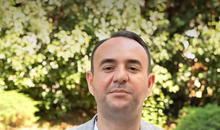

The silent but rapid fading of the towers' euphoria
2025-07-01 18:58:07
Donald Trump's daughter says 'goodbye' to June with photos from Vlora
2025-07-01 18:48:47

Tirana vote recount, Alimehmeti: CEC defended manipulation
2025-07-01 18:15:05

Left Flamurtari, striker signs with another Albanian club
2025-07-01 17:43:14
Accident on the Lezhë-Shëngjin axis, one injured
2025-07-01 17:19:35
June temperature records, Italy limits outdoor work
2025-07-01 17:03:15

Meet Kozeta Miliku, named one of the top five scientists in Canada
2025-07-01 16:32:12
"Arsonist" arrested for repeatedly setting fires in Vlora (NAME)
2025-07-01 16:29:45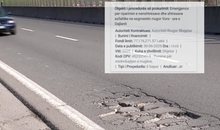

The ecological integrity of the Vjosa River risks remaining on paper
2025-07-01 16:09:40
Heat Headache/ Causes, Symptoms and Measures You Should Take
2025-07-01 16:01:13
UN: The world must learn to live with heat waves
2025-07-01 15:54:50

Three cars collide in Tirana, one of them catches fire
2025-07-01 15:38:16

Shehu: Whoever doesn't want Berisha, doesn't want the opposition 'war'!
2025-07-01 15:19:20
Berisha requests the OSCE Assembly: Help my nation vote freely
2025-07-01 15:11:46
Be careful with medications: Some of them can harm your sex life
2025-07-01 15:00:32
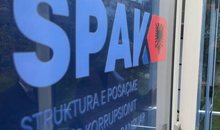
'Golden Bullet'/ Lawyers leave the courtroom, Altin Ndoc's trial postponed again
2025-07-01 14:44:52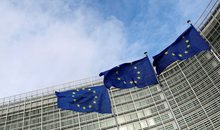
EU changes leadership, Kosovo in a number of places
2025-07-01 14:40:01
Should we drink a lot of water? Experts are surprised: You risk hyponatremia
2025-07-01 14:30:20

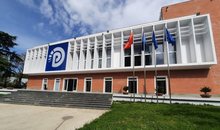

Lëpusha beyond Rama's postcards: A village that is being silently abandoned
2025-07-01 13:41:56
Scorching temperatures in France close the Eiffel Tower
2025-07-01 13:29:35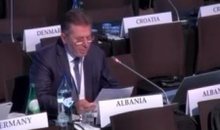
Media: China, Iran and North Korea, a threat to European security
2025-07-01 13:20:12
Albania drops in global index: Less calm, more insecure
2025-07-01 13:09:35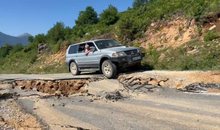
Road collapses, 5 villages in Martanesh risk being isolated
2025-07-01 13:03:04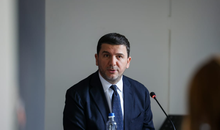
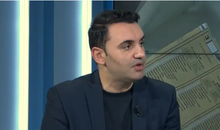
Këlliçi: Opposition action to be decided in September
2025-07-01 12:48:49
Four tips for coping with the heat wave
2025-07-01 12:38:53
Car hits pedestrian on Transbalkan road
2025-07-01 12:27:09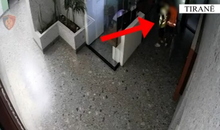
Authors of 9 robberies, Erjon Sopoti and Abdullah Zyberi arrested
2025-07-01 12:15:56

He abused his minor daughter, this is a 36-year-old man in custody in Fier
2025-07-01 11:50:34
The constitution of the Kosovo Assembly fails for the 40th time
2025-07-01 11:40:08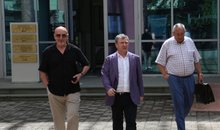




EU confirms support for the Western Balkans
2025-07-01 10:50:45
Serious in Fier! Father sexually abuses his minor daughter
2025-07-01 10:32:33
One year since the passing of the colossus of Albanian literature, Ismail Kadare
2025-07-01 10:25:26


They supplied the 'spaçators' with drugs, two young men are arrested in Tirana
2025-07-01 09:54:09
Europe is "scorching", how dangerous are high temperatures?
2025-07-01 09:48:56


Nigel Farage in Albania: but why?
2025-07-01 09:13:12
Xama: The "Partizani" dossier is quite weak and without facts!
2025-07-01 09:04:47
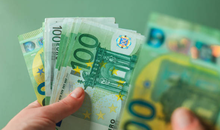
Foreign exchange, the rate at which foreign currencies are sold and bought
2025-07-01 08:35:39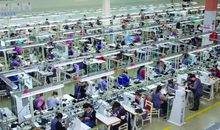
Fabricators again warn of factory closures and job cuts
2025-07-01 08:21:30
Horoscope, what do the stars have in store for you today?
2025-07-01 08:08:59
Scorching hot, temperatures reaching 40°C
2025-07-01 07:57:12
Morning Post/ In 2 lines: What mattered yesterday in Albania
2025-07-01 07:42:59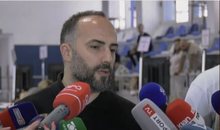
Recount after May 11, Braho: I had no expectations for massive vote trafficking
2025-06-30 22:54:18

Second hearing on the protected areas law, Zhupa: Unconstitutional and dangerous
2025-06-30 22:18:46
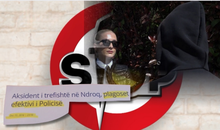

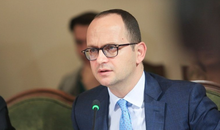
Israel-Iran conflict, Bushati: Albanians should be concerned
2025-06-30 21:32:42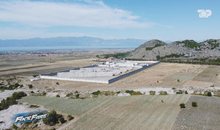

Fuga: Journalism in Albania today in severe crisis
2025-06-30 21:07:11
"There is no room for panic"/ Moore: Serbia does not dare to attack Kosovo!
2025-06-30 20:49:53

Temperatures above 40 degrees, France closes nuclear plants and schools
2025-06-30 20:28:42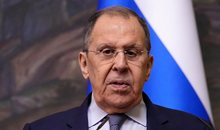
Lavrov: NATO is risking self-destruction with new military budget
2025-06-30 20:13:54
Turkey against the "Bektashi state" in Albania: Give up this idea!
2025-06-30 20:03:24

Accused of sexual abuse, producer Diddy awaits court decision
2025-06-30 19:40:44
